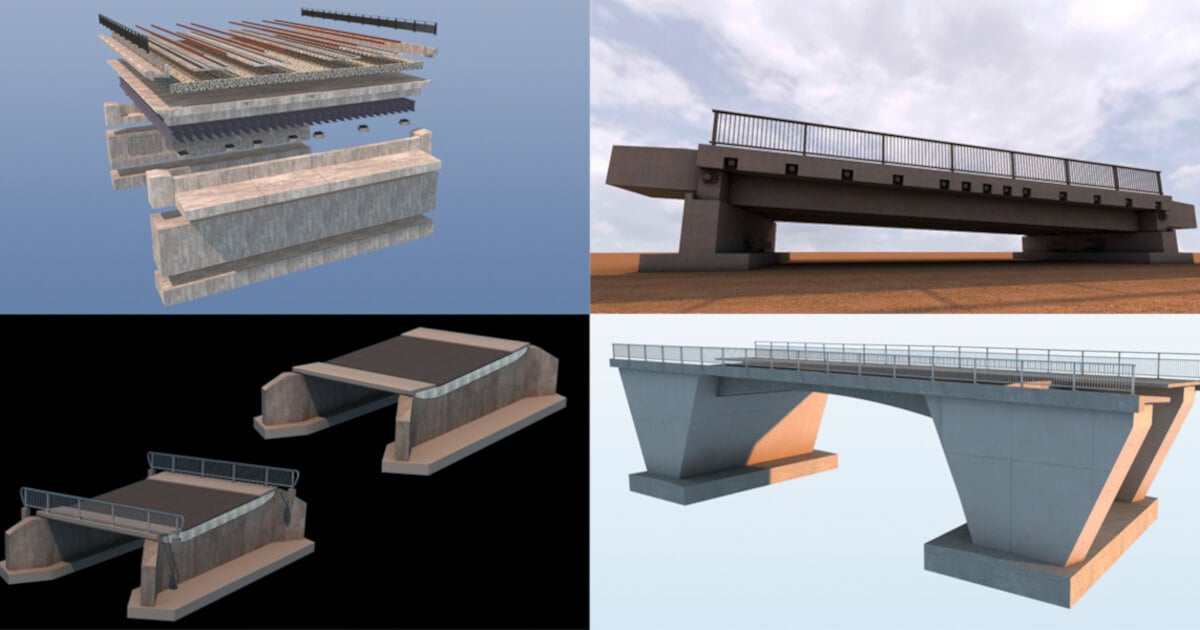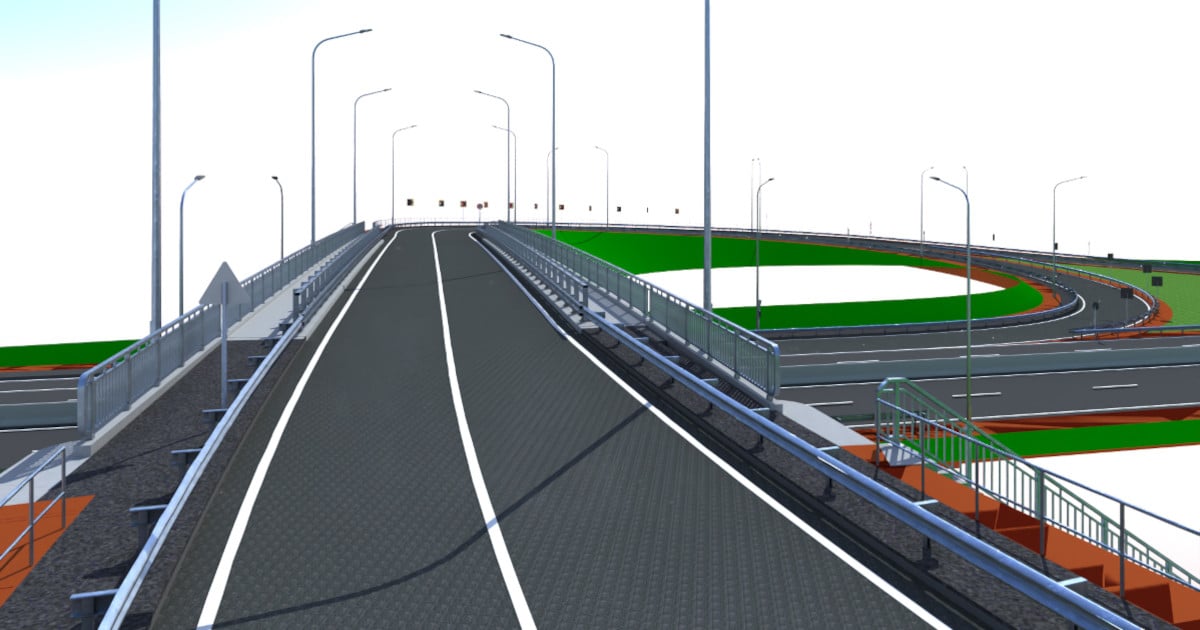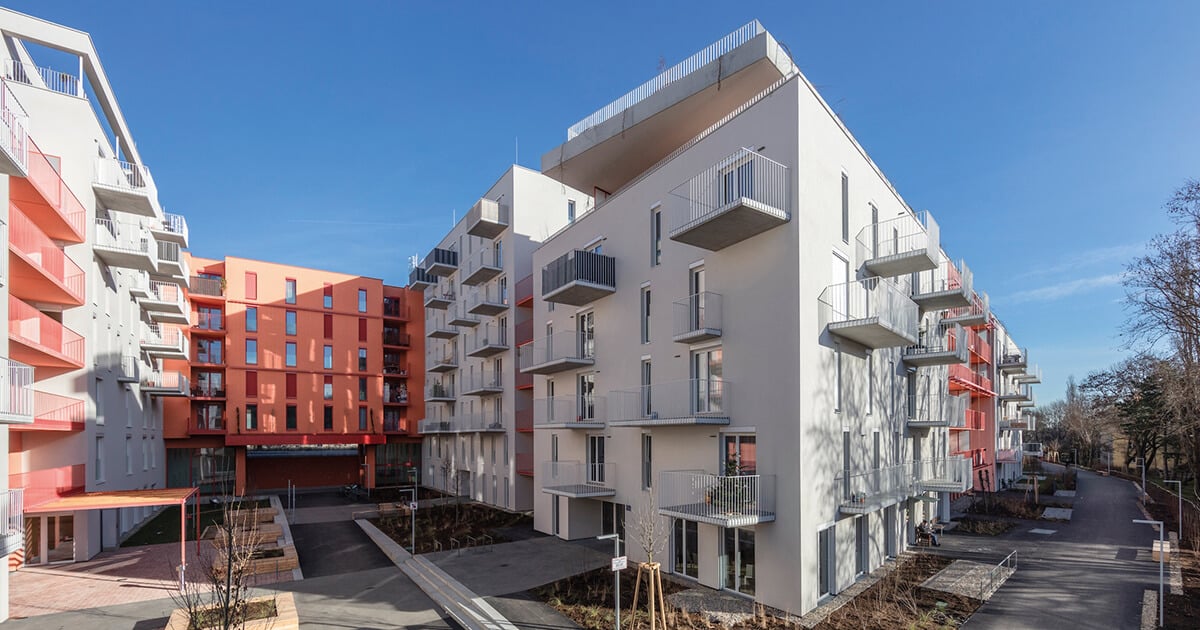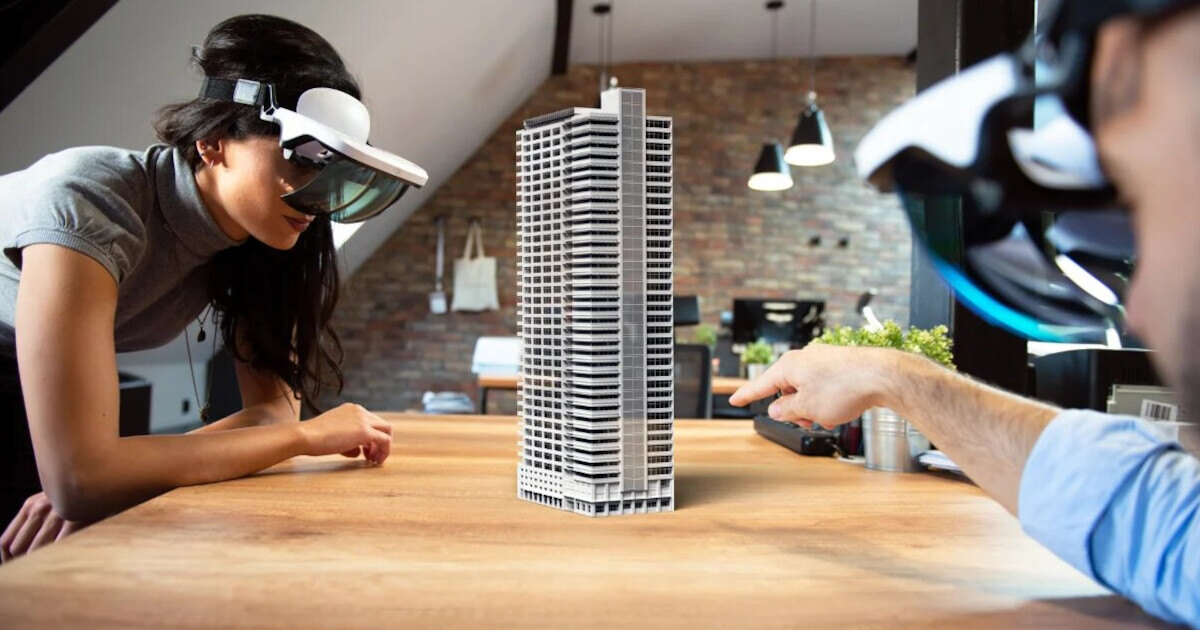Four groups of Master's students at HTW Dresden show how the next generation of engineering students plan bridges with Allplan Bridge. This is no coincidence, as Allplan Bridge is an integral part of the curriculum at HTW Dresden.
In the Master's degree program, "Sustainable Retrofitting and Construction in Existing Contexts", young engineers at HTW Dresden learn how to master the future challenges of civil engineering with a focus on environmental and climate protection. Consequently, digital planning is also part of the training, which students in the Building Informatics department learn about in the "Computer Applications/BIM" module, among others. In the summer semester of 2023, the aim of this module was to apply the knowledge acquired in a practical project. As a group project, one of four bridges with a small span was to be developed as a parametric 3D model using Allplan Bridge and then visualized with all relevant attachments. A particular focus was placed on the modeling of the superstructure, caps, and abutments. The result is impressive.
PAMB – Pilot application for modular bridge construction
The first "small bridge" is a new milestone in traffic route construction. PAMB – short for pilot application modular bridge construction – is a carbon concrete modular bridge with a clear width of 14.82 meters. The temporary structure is part of a construction site bypass on the B173 west of Freiberg. Five longitudinally oriented precast elements form the bridge superstructure. The prefabricated parts are exclusively reinforced and prestressed with carbon. Thanks to high-precision prefabrication, the construction site assembly was carried out completely without the use of in-situ concrete or adhesives. Approval in individual cases (ZiE) was granted for the implementation of this innovative construction method in a physical structure. The components modeled were beams, abutments, and angle support elements. Railings and tendons formed the equipment elements.
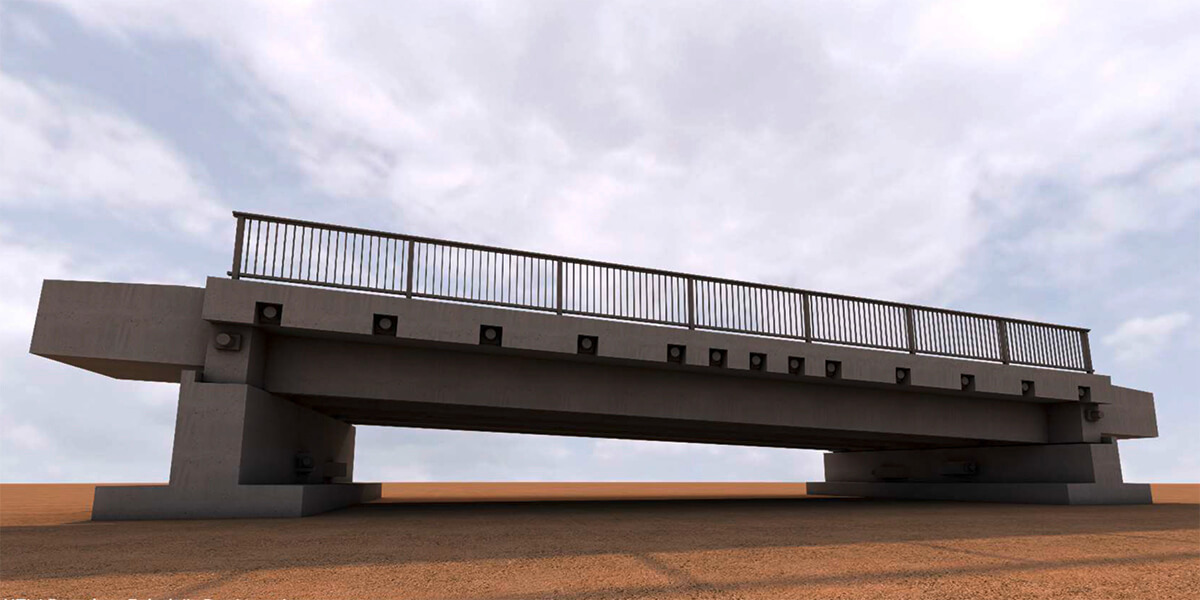 © HTW Dresden / Simon Langhof & Vincent Lauber
© HTW Dresden / Simon Langhof & Vincent Lauber
Carbon concrete bridge S 111
The second small bridge is also a pioneer of infrastructure construction in the Free State of Saxony. The new replacement structure built in 2021 on the S 111 state road near Wurschen (near Bautzen) is the first carbon concrete bridge in Saxony's road network. This means that the reinforcement of the superstructure is also made exclusively of carbon concrete. With a clear width of six meters, the slab bridge is the shortest of the four bridges and almost twice as wide (11.13 meters) as it is long. The superstructure, caps, abutments, and structural components were modeled, as were the railings for the equipment elements.
 © HTW Dresden / Meike Krispin & Luisa Rengers
© HTW Dresden / Meike Krispin & Luisa Rengers
RAB-ING Sample 3-6-2-2
This bridge is the only fictitious road design among the four bridges and therefore does not exist in the physical world. Strictly speaking, it is a model example of a flyover structure (integral structure) from the Guidelines for the Design of Civil Engineering Structures (RAB-ING). The reinforced concrete slab bridge has a clear width of 19 meters and a width of 13.35 meters between the railings. The requirements for the modeling of components and equipment elements were the same as for the S 111 bridge.
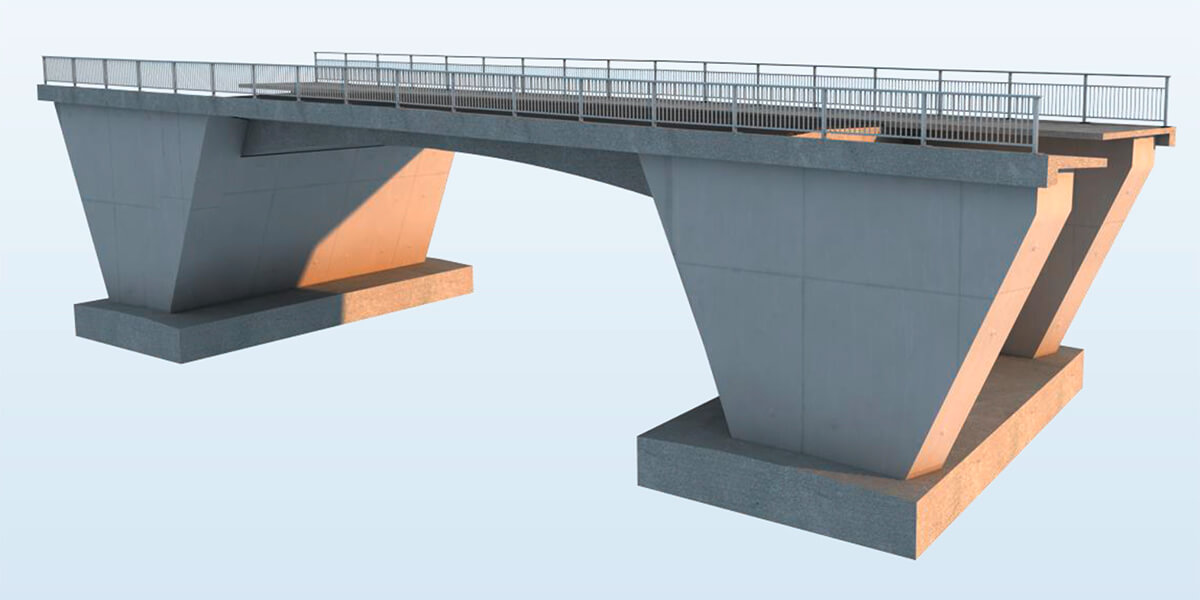 © HTW Dresden / Nadine Thron, Viera Labaj & Philipp Stadelmeier
© HTW Dresden / Nadine Thron, Viera Labaj & Philipp Stadelmeier
Friedensstraße level crossing
The largest and also oldest bridge is the Friedensstraße level crossing – a section of the Leipzig-Dresden railroad line (line kilometer 114.678). The filler beam deck from 2015 has a clear width of around 20 meters and is 21.33 meters wide between the railings. When modeling, the focus was on the slab, girders and caps as components. Furthermore, railings and bearings had to be considered as relevant add-on parts.
 © HTW Dresden / Tim Baumann & Lukas Cwienzek
© HTW Dresden / Tim Baumann & Lukas Cwienzek
